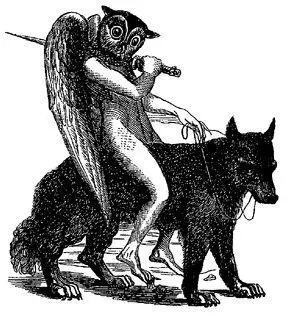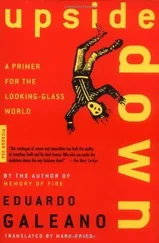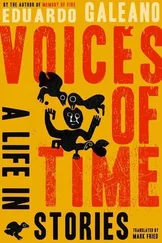Many Christians sought refuge in the immense cathedral of Saint Sophia, which nine centuries previous had sprung from Empress Theodora’s delirium. That throng of Christians expected an angel to come down from heaven and chase the invaders out with his fiery sword.
No angel came.
Sultan Mehmet did. He entered the cathedral mounted on his white horse and turned it into the main mosque of the city now known as Istanbul.

A number of years had passed since the fall of Constantinople when Martin Luther warned that Satan resided not only among the Turks and Moors, but “in our own home: in the bread we eat, in the water we drink, in the clothes we wear, and in the air we breathe.”

Thus it was and thus it remains.
Centuries later, in the year 1982, the devil, in the form of a housewife who howled and slithered along the floor, dared to visit the Vatican, obliging Pope John Paul II to wage hand-to-hand combat with the evil one. He warded off the intruder by reciting the demon-killing exorcisms of another pope, Urban VIII, who chased from the head of Galileo Galilei the devilish notion that the arth revolved around the sun.
When the devil appeared in the form of an intern in the Oval Office, President Bill Clinton spurned such an antiquated Catholic methodology. He frightened off the evil one by unleashing a three-month torrent of missiles on Yugoslavia.

Venus turned up one morning in the city of Sienna. They found her lying naked in the sun.
The city paid homage to the marble goddess buried during the Roman Empire, who had favored them by emerging from the depths of the earth.
She was offered the pinnacle of the city’s principal fountain as her home.
No one tired of gazing at her; everyone wanted to touch her.
But soon came war and its horrors, and Sienna was attacked and looted. In its session of November 7, 1357, the municipal council decided Venus was to blame. God had sent misfortune as punishment for the sin of idolatry. And the council ordered Venus, that invitation to lust, destroyed, and the pieces buried in the hated city of Florence.
In Florence, a hundred and thirty years later, another Venus was born from the hand of Sandro Botticelli. The artist painted her rising from the foam of the sea, with no more clothing than her skin.
And a decade later, when the monk Savonarola built his great bonfire of purification, it is said that Botticelli himself, repenting the sins of his brushes, fed the flames with some of the diabolical pranks he had painted in his youth.
With Venus, he could not.

The great beak of a bird of prey crowned his figure wrapped in a long black cloak. Underneath the cloak, a horsehair shirt tormented his skin.
God’s wrath roared in his sermons. Father Girolamo Savonarola terrified, threatened, punished. His eloquence set the churches of Florence ablaze: he exhorted children to inform on their sinning parents, he denounced homosexuals and adulterous women hiding from the Inquisition, and he demanded that carnival be turned into a time of penance.
Pulpits burned with his holy ire, and in the piazza of the seigniory burned the bonfire of the vanities, stirred up night and day by his words. Ladies renounced pleasure and threw their jewelry, perfumes, and potions into the fire, alongside lascivious paintings and books that exalted the libertine life.
At the end of the fifteenth century, Savonarola too was tossed into the flames. Unable to control him, the Church burned him alive.

When he was twenty-five, the watchdogs of public morality known as the Officers of the Night took Leonardo from the workshop of his teacher Verrocchio and plunked him in a cell. Two months he spent there, unable to sleep or breathe, terrified by the prospect of the stake. Homosexuality was punished by fire, and an anonymous tip accused him of “committing sodomy in the person of Jacopo Saltrelli.”
He was absolved for lack of evidence, and restored to life.
Then he painted master works, nearly all of them unfinished, which were the first to make use of sfumato and chiaroscuro,
he wrote fables, legends, and recipes,
he sketched the organs of the body perfectly for the first time, having studied anatomy from cadavers,
he proved that the world turned,
he invented the helicopter, the airplane, the bicycle, the submarine, the parachute, the machine gun, the grenade, the mortar, the tank, the moving crane, the floating dredger, the spaghetti-making machine, the bread mill. .
and on Sundays he bought birds in the market and opened their cages.
Those who knew him said he never embraced a woman. Yet from his hand was born the most famous portrait of all times. A woman.

To avoid punishment, some homosexuals dressed up as women and passed themselves off as prostitutes.
At the end of the fifteenth century, Venice approved a law that obliged the professionals to show their tits. Bared breasts had to be displayed in the windows where they offered their services to clients walking by. They worked beside a bridge over the Rialto, which is still called the Ponte delle Tette.

They say Leonardo wished to perfect the fork by giving it three tines, but it ended up looking just like the trident of the king of hell.
Centuries previous, Saint Pietro Damiani decried that novelty from Byzantium:
“God would not have given us fingers if he wanted us to use that instrument of Satan.”
Queen Elizabeth of England and the Sun King of France ate with their hands. When the writer Michel de Montaigne ate in a hurry, he bit his fingers. Every time the musician Claudio Monteverdi felt obliged to use a fork, he purchased three masses to pay for the sin.

On the off chance he’ll answer, I ask Michelangelo:
“Why does the statue of Moses have horns?”
“In the fresco The Creation of Adam in the Sistine Chapel, we all fix our gaze on the finger that gives Adam life, but who is that naked girl God is casually yet lovingly caressing with his other hand?”
“In the fresco The Creation of Eve , what are broken branches doing in Eden? Who cut them? Was logging allowed?”
“And in the fresco The Last Judgment , who is the pope who has been punched by an angel and is tumbling down to hell carrying the pontifical keys and a bulging purse?”
“The Vatican concealed forty-one little penises that you painted in that fresco. Did you know that your friend and colleague Daniele da Volterra was the one who covered those crotches with cloths of shame by order of the pope, and for that reason earned the nickname Il Braghettone , the Underwear Man?”
Читать дальше




















